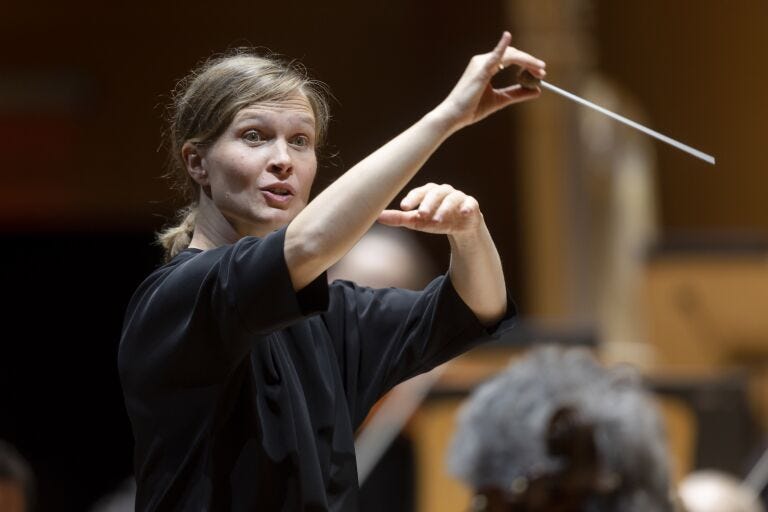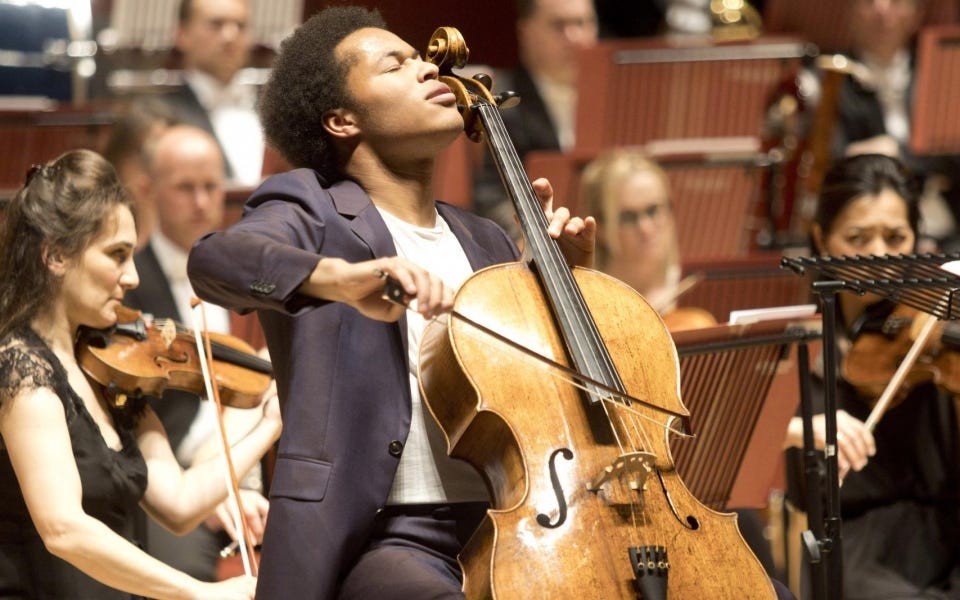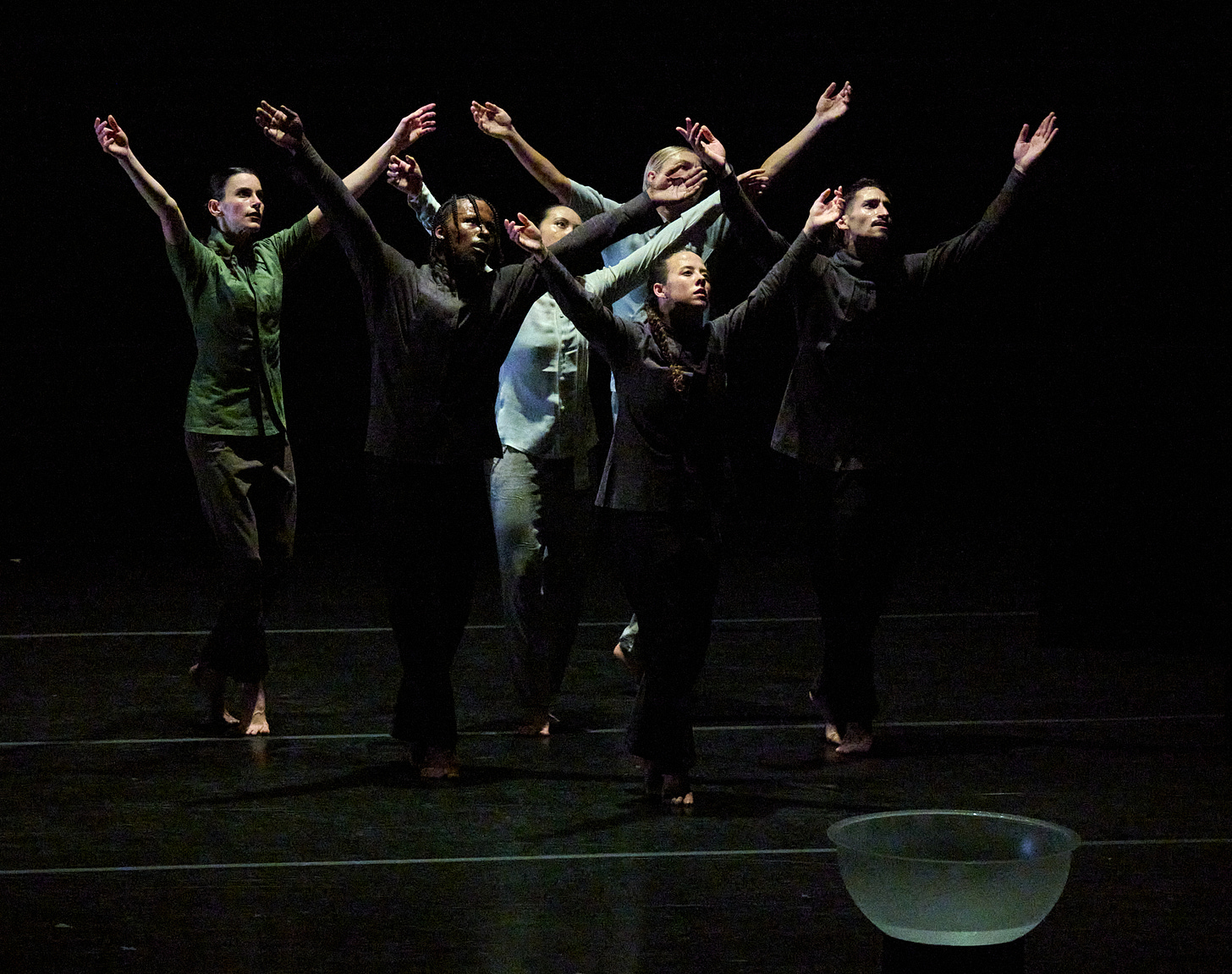New York Beckons Dudamel, Plus Other Treats at Carnegie Hall
Jacaranda Sees World War III Averted and BODYTRAFFIC PREVENTS A CRASH
By Donna Perlmutter
Remember, we live in the city of Los Angeles. It’s properly pronounced as a Spanish name — Loce ANN-Hay-Lace — according to language origins. So in these days of de rigueur diversity, when we are smack in the middle of rampant multi-cultural, multi-ethnic, multi-racial experience…
Is there any wonder that the Los Angeles Philharmonic would embark on its Pan-American Initiative?
None. It’s just the thing. And there turns out to be any number of highly endowed composers to illustrate our pride of place. Hallelujah!
We even boast an Hispanic music director, Gustavo Dudamel, who hit super stardom as a Venezuelan more than a decade ago when the orchestra’s president Deborah Borda hopped on a plane to sign him -- beating the other salivating execs hoping for a podium find.
(That was then. But shame can spoil the city’s fun, what with elected officials, many of them Hispanic, sliding to their astonishing inner-most bigotry. Sadly they’re not alone. Bigotry is boiling over in this culture of cult worship, so ripe for abusive cult heroes.)
Well, at least the music is safe here in Los Angeles. What’s more, there’s plenty to go around with the Philharmonic commissioning and/or searching out some of the top works written by composers south of the border.
Among them was Gabriela Ortiz whose “Altar de cuerda” showcased the extraordinary 19-year-old violinist Maria Duenas in a whiz-bang, heady performance. Call it a toss-up between what took our collective breath away more, the concerto itself or the soloist. Never mind. Winners together.
Big, bold and upbeat with urban references, the three-movements were in concerto format. Duenas, her technique unassailable, her insinuations oblique and eerie, played with thrilling urgency, her violin riffs picking up bids from grabby orchestral rhythmics that rolled out like declamations -- but not failing to explore a middle section that shimmered sadly with faint glissandos.
Elsewhere the orchestra ventured a short Ortiz piece, “Kauyumari,” also packed with intriguing harmonies and accented in riotous rhythms. Call it ear candy for the band, and an equally invigorating ear-stretch for the audience.
Another composer on the bill, Arturo Marquez, called up irresistible dance rhythms in his “Fandango,” featuring yet another violinist Anne Akiko Meyers, well known hereabouts. Her lovely plush tone, thrusting forward, seemed made for this earthy, passionate score with its swooping plangency.
All these works, plus Copland and Mahler, formed the Philharmonic’s two-program tour to Carnegie Hall and other East Coast points.
(The NY Times noted Dudamel’s singular style of taking bows, not alone, but standing among the musicians, and “his corkscrew curls, his megawatt charisma,” plus the fact that he’s “on the NY Philharmonic’s music directorship wish list.” And closing with “…it remains to be seen how much more New Yorkers will get.” Saying so out loud, as it were. Are we also wondering?)
But here at Disney we got to welcome back Mirga (who quickly zoomed to first name appellation) Grazinyte-Tyla. Of course you remember her -- she had been assistant conductor under Dudamel before departing to lead the City of Birmingham Symphony Orchestra.
And remember that band? The British outpost where Simon Rattle held forth among other podium elites? Well, she’s one of them now -- perhaps the most highly ranked of her gender. Like her old boss she and CBSO marched into Carnegie weeks apart, displaying the same wares to New Yorkers as they did to Angelenos.
Let’s say it: Her team makes a remarkable imprint. And “small but mighty” is a good description of the diminutive Mirga, presiding over her brood in black lounge-wear (isn’t comfort free to be had?), hair pulled back in a pony tail, feet planted firmly in place (hang on, folks).
And no pulling back on energy output-- if anything this maestra activates her baton for every beat, vigorously, throughout. With a fanciful style but a clear stick.
Their ambitious program came with a passel of treats. One of them, the symphony that Thomas Adès excerpted from his opera “The Exterminating Angel” blew the roof off, seducing first as a great jabbing waltz, at times turning rageful, and then a wily zinger that rolls out full orchestral lushness before falling on waves of military cushions.
On the agenda’s solo spot, Mirga invited Sheku Kanneh-Mason, the cellist whose name is always linked to the Prince Harry/Megan Markle wedding. But, as an inimitable artist, he far outshines that or any celebrity event linked to him. Why?
Because he turns a score -- here, Haydn’s Cello Concerto in C -- into an occasion of singular musicality. It becomes a veritable aural picture, a tapestry of Haydn riffs. His uncanny linkage phrase to phrase and the way he swoons into each measure’s curves with his expressive connection to the orchestra, and his deeply intimate leanings in the slow movement. All of it magnetizes. It’s music come to undeniable life, -- joined by his appreciative cohorts, Mirga and the CBSO.
Music, (Bartok excerpts), not about life but tragic death, was cited when the L.A.-based BODYTRAFFIC re-took the stage of its regular haunt, the Wallis in Beverly Hills. This time its ever-brilliant dancers performed a few new pieces, along with relative oldies -- conjuring the question of how a troupe can consistently attract/keep a stable of peak dancers.
The answer:Terrific leadership (Tina Finkelman Berkett and Guzman Rosado) and god knows everything else.
At any rate, “The One To Stay With” brought us back to everything that dance can (and used to) portend, rather than the jerky-puppet, disjunctive-body-parts trend that has, alas, not yet worn itself out.
Back to what exactly? Expressions of human feeling, that’s what. The kind that evoke -- in relatable movement -- what people find and respond to in their lives. Here it gets captured artfully, with lighting and spatial design, in figures that portray pathos, sadness, sometimes humor. Even without any narrative, any story, or any program. Yes, the choreographers Baye and Asa refer to the opioid crisis, in a written note. But their piece is powerful without a specific. It’s universal.
Still, a truly specific work, based on an actual historic event -- the 1962 Cuban missile crisis -- premiered at the Kirk Douglas Theatre. It came courtesy of the Santa Monica-based Jacaranda, that ever-adventurous and laudable modern music enterprise -- in the form of “Arkhipov,” an opera by Peter Knell and Stephanie Fleischmann.
For now, we witnessed it in concert form. But we hope to see this moving piece staged (donors, out there, listen up) -- not only for its overall worthiness but because it tells the tale of looming autocratic policy that must haunt us all. The titular hero, of 60 years ago, was a Russian submarine officer who stopped a nuclear torpedo from being fired during that near-disaster, actually preventing World War III.
Both the alluring score -- with its deft intersecting of winds, strings and percussion revealed by a crack chamber orchestra and led fluently by Daniela Candillari -- and the drama, an existential conflict of seamen on crowded together on a submarine, conspire to make a suspenseful mix (with “Billy Budd” in mind). Edward Parks III, as Arkhipov, sang with nuanced fervor, evidence that he had fully integrated the role.







